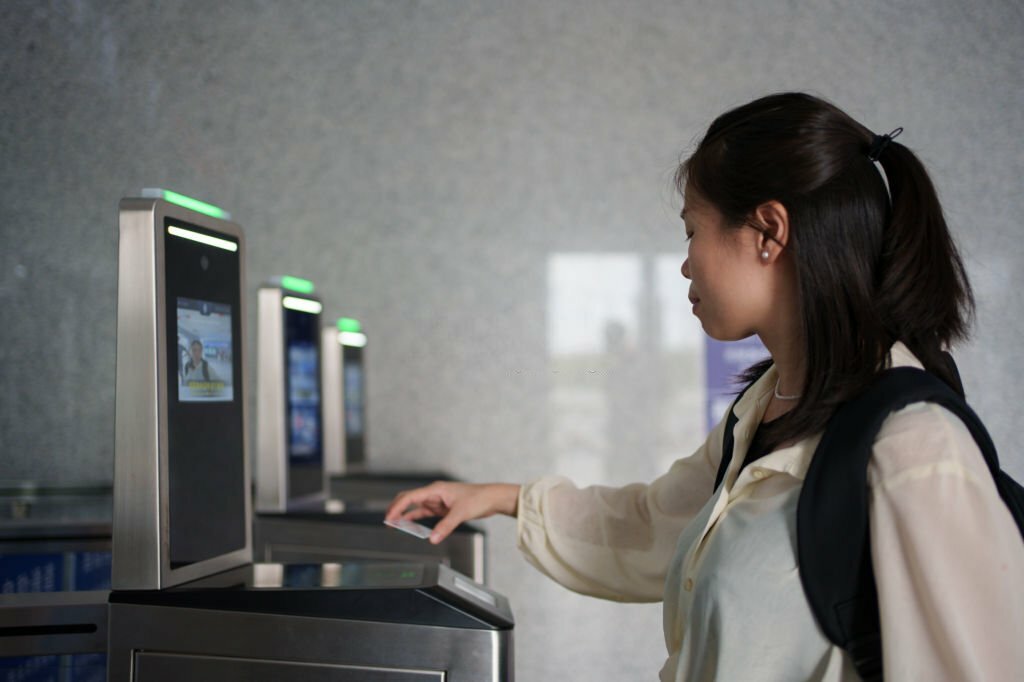
Facial recognition software has become an integral part of our daily lives, permeating various aspects of society, from unlocking our smartphones to enhancing security measures at airports and public spaces. This technology relies on complex algorithms and advanced machine-learning techniques to identify and verify individuals based on their facial features. In this exploration, we’ll delve into the workings of facial recognition software, its underlying technologies, applications, benefits, and ethical considerations.
Fundamental Components of Facial Recognition Software

Facial recognition software operates on the premise that each person has unique facial features that can be analyzed and distinguished. The process involves several key components:
1. Face Detection:
The first step in facial recognition is detecting and locating faces within an image or video stream. This is achieved through the use of computer vision algorithms that identify patterns resembling a human face. Common techniques include Viola-Jones object detection and deep learning-based methods like Convolutional Neural Networks (CNNs).
2. Feature Extraction:
Once faces are detected, the software extracts key facial features, often referred to as landmarks. These landmarks include the distance between the eyes, the shape of the nose, and the contours of the jawline. Feature extraction enables the creation of a unique facial signature for each individual.
3. Template Creation:
The extracted facial features are then used to create a template or a mathematical representation of the individual’s face. This template serves as a digital fingerprint, capturing the unique characteristics that differentiate one person from another.
4. Database Comparison:
In the identification process, the created template is compared against a database of known faces. This database could range from a small collection of employee photos in a company’s system to a vast repository used by law enforcement agencies.
5. Matching Algorithm:
Matching algorithms play a crucial role in determining the similarity between the facial template and the faces in the database. Traditional methods involve techniques like eigenface recognition, while more modern approaches leverage deep learning models for superior accuracy.
Advanced Technologies in Facial Recognition

1. Deep Learning:
The advent of deep learning, particularly Convolutional Neural Networks (CNNs), has significantly improved the accuracy of facial recognition systems. CNNs can automatically learn hierarchical features from facial images, enabling more robust and nuanced analysis.
2. 3D Facial Recognition:
Traditional facial recognition relies on 2D images, which can be affected by changes in lighting and pose. 3D facial recognition, however, captures and analyzes the spatial geometry of the face, making it more resilient to variations in lighting conditions and facial expressions.
3. Liveness Detection:
To prevent spoofing attempts using photos or videos, facial recognition systems now incorporate liveness detection. This involves assessing the liveliness of a face by analyzing factors like blinking, head movement, and facial expressions.
Applications of Facial Recognition Software
1. Security and Surveillance:
One of the primary applications of facial recognition is in security and surveillance. Airports, government facilities, and public spaces use this technology to identify and track individuals, enhancing overall security measures.
2. Access Control:
Facial recognition is employed for access control systems, replacing traditional methods like key cards or passwords. This is prevalent in corporate environments, where employees can gain access to secure areas using facial recognition technology.
3. Law Enforcement:
Law enforcement agencies use facial recognition to aid in criminal investigations. By matching faces captured in surveillance footage with known criminals in a database, authorities can identify and apprehend suspects more efficiently.
4. Smartphones and Devices:
Most modern smartphones use facial recognition as a convenient method for unlocking devices. This technology has replaced or complemented traditional authentication methods like PINs or fingerprint scans.
5. Marketing and Retail:
In the retail sector, facial recognition can be utilized for customer analytics and personalized marketing. By analyzing customer demographics and behavior, businesses can tailor their marketing strategies and improve the overall shopping experience.
Benefits and Concerns

Benefits:
- Enhanced Security: Facial recognition systems provide an additional layer of security, particularly in sensitive areas.
- Convenience: The ease of use, especially in access control and device unlocking, makes facial recognition a convenient authentication method.
- Efficiency: In law enforcement and surveillance, facial recognition can significantly reduce the time and effort required to identify individuals.
Concerns:
- Privacy Issues: The widespread use of facial recognition raises concerns about the invasion of privacy, as individuals may be identified and tracked without their knowledge or consent.
- Bias and Accuracy: Facial recognition systems have been criticized for exhibiting biases, especially concerning gender and race. Ensuring fairness and accuracy in diverse populations remains a challenge.
- Security Risks: There are concerns about the security of facial recognition databases, as unauthorized access could lead to misuse of sensitive personal information.
Ethical Considerations
The ethical implications of facial recognition technology have spurred debates and discussions worldwide. Striking a balance between the benefits and potential risks requires careful consideration of ethical principles:
1. Consent:
Obtaining informed consent from individuals before using their facial data is crucial to respecting their privacy rights. Transparent policies and practices should be in place to ensure users are aware of how their data will be used.
2. Transparency:
Facial recognition algorithms should be transparent, and their workings should be open to scrutiny. This transparency can help address concerns about bias and accuracy, promoting accountability in the development and deployment of these systems.
3. Regulation:
Governments and regulatory bodies must establish clear guidelines and regulations governing the use of facial recognition technology. These regulations should address issues such as data protection, security, and the responsible use of technology in various sectors.
Conclusion
Facial recognition software, with its intricate blend of computer vision, machine learning, and advanced algorithms, has revolutionized how we identify and authenticate individuals. From bolstering security to streamlining access control, the applications are diverse and continually expanding. However, as with any powerful technology, ethical considerations and potential risks must be carefully navigated to ensure the responsible and equitable use of facial recognition in our interconnected world. Balancing innovation with privacy and security will be key to harnessing the full potential of this transformative technology.